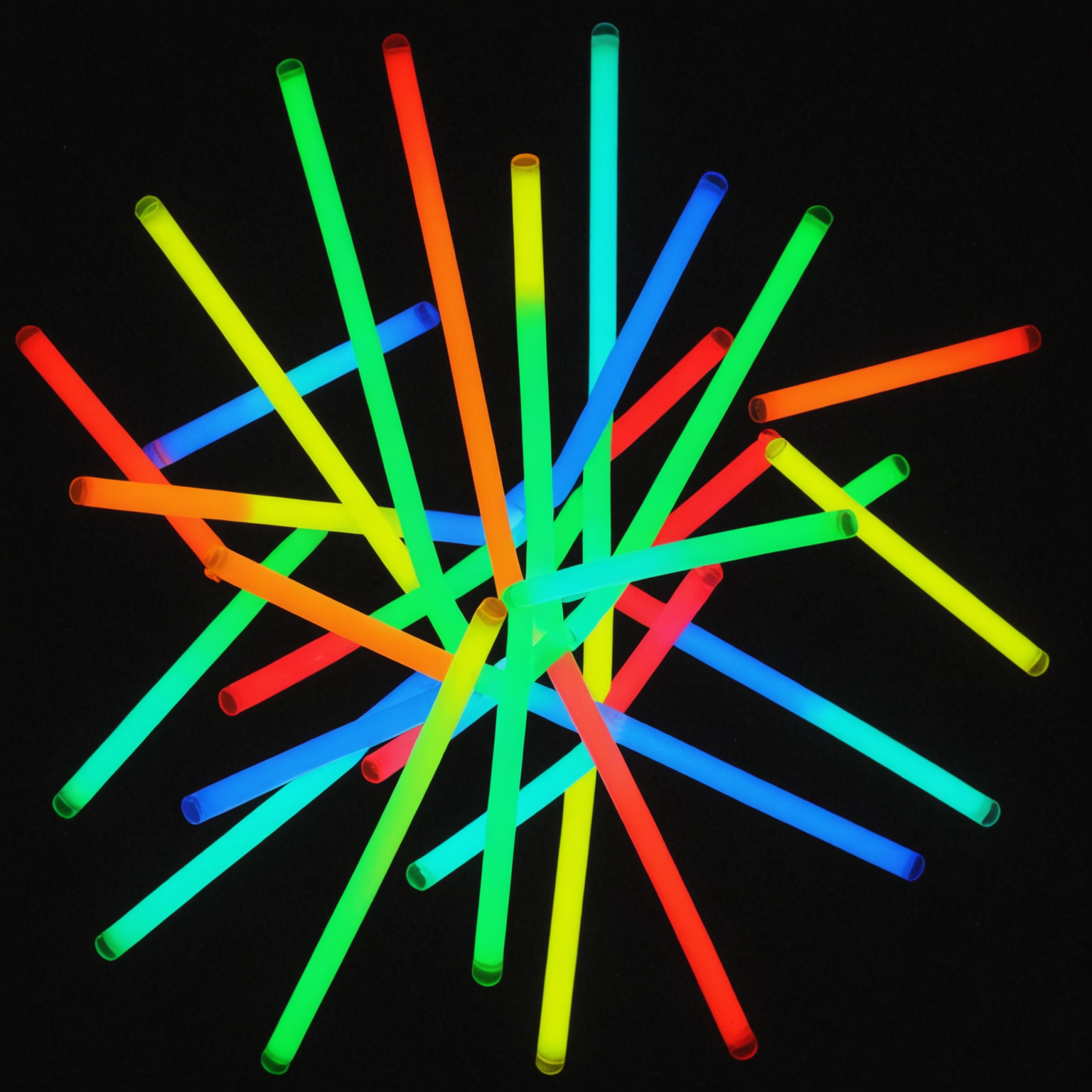The Science Behind Glow Sticks (and How to Make One at Home)
 Glow sticks light up through a cool chemical reaction called chemiluminescence, where chemicals mix and release energy as visible light.
Glow sticks light up through a cool chemical reaction called chemiluminescence, where chemicals mix and release energy as visible light.
How a simple snap lights up the night
By Peter Teoh, Science Writer
Imagine snapping a plastic stick and suddenly it glows bright green, blue, or red — no batteries, no electricity, just pure chemistry magic. Glow sticks are awesome examples of how science can make light in a totally different way than a light bulb or flashlight. Curious how they work? Let’s dive into the fascinating chemistry behind glow sticks and even learn a safe way to make your own at home!
What Makes Glow Sticks Glow?
Glow sticks produce light through a process called chemiluminescence — a chemical reaction that releases energy as light instead of heat. When you bend a glow stick, you break a tiny glass vial inside it, allowing two special liquids to mix. This starts a reaction that creates glowing light.
The Chemical Ingredients
Inside a typical glow stick, there are two main compartments:
- The outer flexible plastic tube contains a mix of phenyl oxalate ester and a fluorescent dye.
- The inner fragile glass vial holds hydrogen peroxide, the activator.
When you snap the glow stick, the glass vial breaks, letting the hydrogen peroxide mix with the phenyl oxalate ester. This sets off a chain of chemical reactions that eventually excite the dye molecules, making them emit light [1][2][8].
The Step-by-Step Reaction
-
Hydrogen peroxide oxidizes the phenyl oxalate ester, producing phenol and a high-energy but unstable compound called a peroxy acid ester.
-
This peroxy acid ester quickly breaks down into more phenol and a cyclic compound known as 1,2-dioxetanedione (though chemists are still exploring its exact nature).
-
The cyclic compound decomposes into carbon dioxide, releasing energy.
-
This energy excites electrons inside the dye molecules, pushing them to a higher energy level.
-
When the electrons fall back to their normal state, they release the extra energy as visible light — the beautiful glow you see [1][2][6][8].
Why Does It Glow Without Getting Hot?
Unlike a light bulb that produces heat and light, glow sticks release almost all energy as light, with very little heat. This happens because the reaction follows a special chemical path that avoids energy loss as heat, making it efficient and safe to touch [2][6].
Colors and Dyes
The color of the glow depends on the dye used inside the stick. Different dyes emit different colors:
| Color | Common Dye Used |
|---|---|
| Red | Rhodamine B |
| Green | 9,10-bis(phenylethynyl)anthracene |
| Blue | 9,10-diphenylanthracene |
By mixing dyes, manufacturers can create a whole rainbow of glow stick colors [2][8].
How to Make Your Own Glow Stick at Home (Simple Version)
Warning: Always handle chemicals carefully and wear gloves and eye protection. Never ingest any chemicals, and do this experiment with adult supervision.
What You’ll Need
- Clear plastic tubes or small sealed containers
- Hydrogen peroxide (3%) from a pharmacy
- Phenyl oxalate ester (available through chemistry kits or educational suppliers)
- Fluorescent dye (such as highlighter ink extracted by soaking marker tips in water)
- Sodium acetate or baking soda (as a mild base catalyst)
- Distilled water
Steps
- Prepare two solutions:
- Solution A: Mix phenyl oxalate ester with a small amount of fluorescent dye and a pinch of sodium acetate.
- Solution B: Use hydrogen peroxide diluted with distilled water.
-
Place Solution A into a plastic tube or container.
-
When ready to glow, add Solution B to Solution A and quickly shake or stir.
- Watch as the mixture begins to glow! The light will slowly fade over time as the reaction finishes.
This homemade glow stick won’t be as bright or last as long as commercial ones, but it’s a great way to see chemiluminescence in action safely [4][5][8].
Why Are Glow Sticks So Cool?
Glow sticks are more than party props:
- They work without electricity or batteries, perfect for emergencies.
- They are waterproof and work in all weather.
- The light is safe — no heat, no sparks.
Plus, the chemistry inside glow sticks shows us how energy can be transferred and transformed in fun ways, inspiring scientists and engineers to invent new light sources and sensors.
Side Notes
-
Chemiluminescence isn’t just in glow sticks. It happens in nature too! Fireflies, some jellyfish, and certain fungi use similar chemical tricks to glow in the dark — called bioluminescence.
-
The exact intermediate compound 1,2-dioxetanedione is still a bit of a chemical mystery, showing how even common things can have secrets scientists are still uncovering [1][6].
-
Glow sticks usually last from 20 minutes to several hours depending on temperature — warmer temps speed up the reaction, making the glow brighter but shorter-lived.
Trending Now
- Bioluminescent Creatures: Nature’s Night Lights
- How LEDs Changed the World of Lighting
- Cool Chemistry Experiments You Can Try at Home
References
- Chemical & Engineering News: Glow sticks’ chemical reaction explained
- Wikipedia: Glow stick
- AstroCamp Science Camp: How Do Glow Sticks Work?
Leave a comment